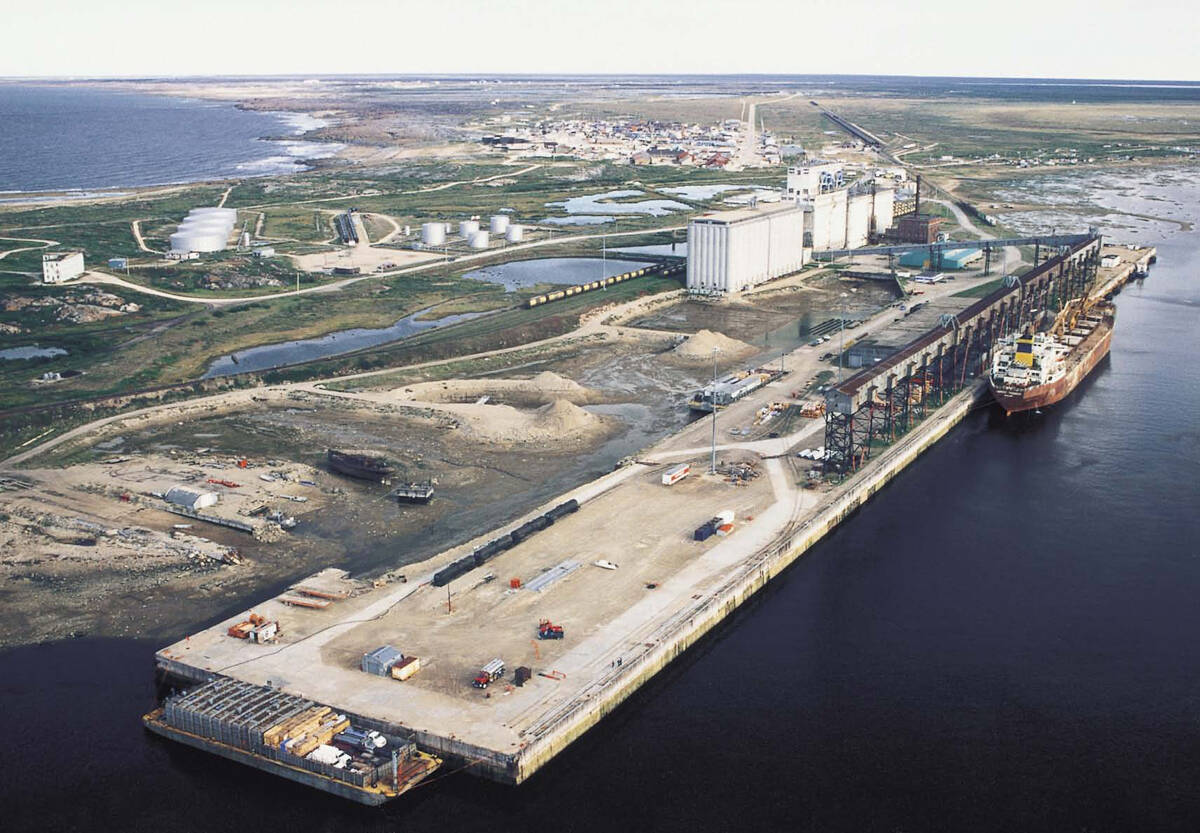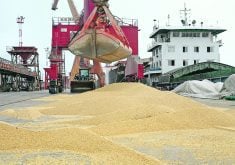Steady grain movement over the next few weeks should start to ease post-harvest congestion at country elevators.
In fact, 2006-07 could be one of the best years for grain movement in recent times, assuming projected sales pan out and the railways are up to the task.
“This is a very marketable crop, no question about it,” said Ward Weisensel, chief operating officer for the Canadian Wheat Board, citing the high quality and expected strong demand.
“We see a lot of potential in selling this crop.”
Read Also

Defence investments could benefit agriculture
A bump in Canada’s NATO spending commitments could lead to infrastructure investments that would benefit rural areas
That’s good news for the long term, but in the shorter term, farmers have been frustrated by limited elevator space.
As of Sept. 16, space across the Prairies was just 21 percent, according to wheat board figures.
Manitoba was the tightest, with 17 percent space, while Saskatchewan had 21 percent and Alberta and British Columbia 22 percent.
Weisensel said limited space is not unusual at this time, especially with an early harvest and farmers looking for immediate cash flow.
“There has been a lot of demand to deliver new crop grain into the system,” he said.
Also, the board accepted a lot of grain last year and had challenges moving it all because of quality problems and railway service issues, leaving a significant carryover of lower protein No. 2 and 3 CWRS.
Weisensel acknowledged frustrated farmers have complained to the board about congestion, but said moving the new crop in a big way will be difficult until the board gets a sense of what it has to sell.
It’s a quality crop, with 80 to 85 percent of wheat falling into the top two grades, compared with 43 percent last year and 32 percent in 2004.
That consistent quality should make for good marketability and relatively trouble-free handling and transportation, he said, adding farmers and grain companies will blend up much of the lower quality carryover stock.
“Certainly it will make the logistics a bit more straightforward, because we won’t have as many grades moving through the system.”
In the first six weeks of the crop year, ending Sept. 10, farmers delivered 4.7 million tonnes to grain elevators, up 48 percent from the same time last year, according to Canadian Grain Commission statistics.
Exports in the same time period were 3.2 million tonnes, 40 percent ahead of last year.
The wheat board predicts that exports of wheat, durum and barley will total 17 to 19 million tonnes in 2006-07, about two million tonnes more than 2005-06.
Agriculture Canada expects exports of grain, oilseeds and special crops will reach 33.4 million tonnes, compared with 31.1 million last year and 26.6 million tonnes two years ago.
Weisensel said the board expects Vancouver and Prince Rupert will operate at or near capacity all year, with good programs through the Great Lakes-St. Lawrence Seaway system and Churchill in Manitoba.
The increased export program raises concerns about railway capacity, especially given the myriad of complaints about Canadian National Railway’s performance last year.
Weisensel said the ability of grain exporters to meet targets will depend heavily on railway performance, adding the rail companies are aware of the board’s needs.
“At this stage the indications we’re getting are that the capacity will be there,” he said.
“But we’ll have to watch it very, very closely and make sure we’re holding their feet to the fire to make sure this gets executed in the manner they’ve indicated it can be.”
Ed Greenberg of Canadian Pacific Railway said his company expects no problems meeting shippers’ needs, barring unexpected developments.
“From our perspective going into this peak season, we feel we’re in the best position possible to meet our customers demands,” he said.
This will be the first fall season in which the company can take advantage of the recently completed $160 million expansion of its western shipping corridor.
He said the railway has been talking with terminal operators about improving grain car movement at port position, has added 500 high-capacity hopper cars to its fleet and will add 80 high-powered locomotives later this year. Rolling stock and labour shouldn’t pose a problem.
CN officials could not be reached for comment.














